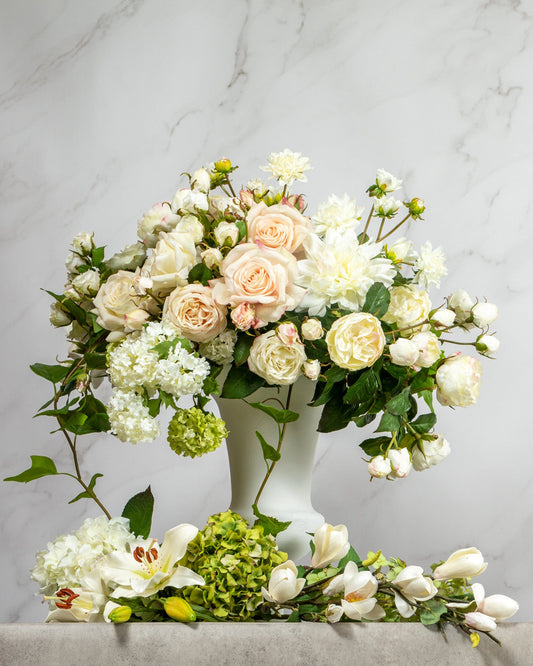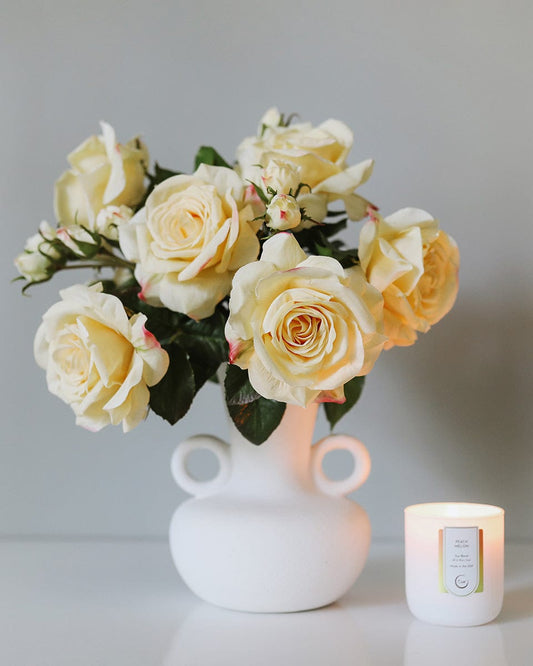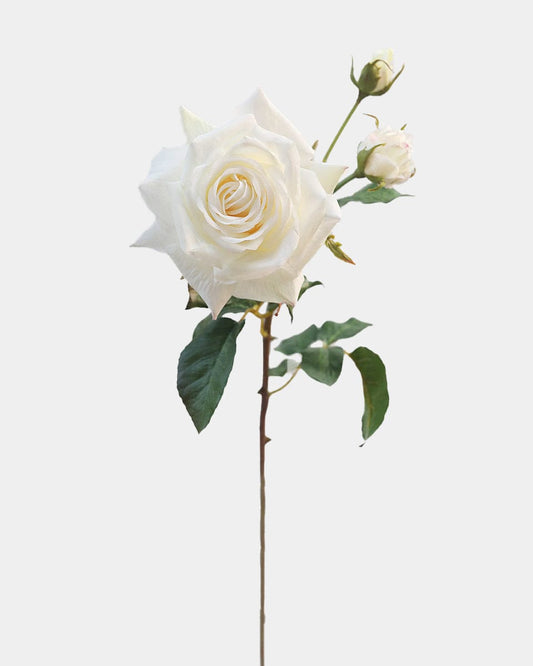Decoding Rose Petal Counts: Why Numbers Matter in Artificial Rose Design

When I first started consulting with Prestige Botanicals on their artificial roses collection, one question kept surfacing during our design sessions: does the number of petals actually matter? After eighteen years of studying rose varieties and their artificial reproduction, I've discovered that petal count isn't just a manufacturing detail—it's the foundation of authentic rose design.
Through my research in botanical illustration and textile design, I've learned that petal counts tell the complete story of a rose variety. Different rose types have distinct petal patterns that affect everything from their visual impact to how light plays across their surface.
Key Takeaways
- Natural rose varieties have specific petal count ranges that define their authenticity and visual character
- Artificial rose petal counts directly influence light reflection, shadow patterns, and overall realism
- Multi-layered petal construction creates depth and prevents the flat appearance common in lower-quality roses
- Proper petal counts enable accurate variety reproduction, from simple wild roses to complex garden hybrids
- Understanding petal mathematics helps identify quality artificial roses and avoid unrealistic designs
The Science Behind Natural Rose Petal Patterns
Natural roses follow fascinating mathematical patterns that most people never notice. Wild roses typically display five petals, while cultivated varieties can range from twelve to over one hundred petals depending on their classification. During my consulting work with Prestige Botanicals, I've observed how these patterns directly translate to artificial rose design success.
Single roses (5-8 petals) create clean, simple silhouettes perfect for modern arrangements. Semi-double varieties (8-20 petals) offer moderate fullness without overwhelming smaller spaces. Full double roses (20+ petals) provide the luxurious appearance most people associate with premium roses.
Pro Tip: When evaluating artificial roses, count the outer petal layer first. If it doesn't match the variety's natural pattern, the entire rose will appear artificial regardless of material quality.
The cytology-inspired texturing I've developed relies on accurate petal counts to create realistic shadow patterns. Too few petals create harsh shadows, while excessive petals appear unnatural.
How Petal Count Affects Visual Impact and Realism
The relationship between petal count and visual realism became crystal clear during a recent project where I was developing reproduction techniques for heritage garden roses. Each additional petal layer changes how light moves through the bloom, creating depth that separates premium artificial roses from basic imitations.
- Lower petal counts (5-15 petals) work beautifully for minimalist designs and contemporary spaces. These roses catch light cleanly and create strong geometric shadows. However, they require perfect petal positioning since each individual petal carries more visual weight.
- Higher petal counts (25-40 petals) generate the complex light patterns we associate with luxury roses. The multiple layers create micro-shadows and highlights that mimic the random perfection of natural blooms.
Working with Prestige Botanicals, I've seen how their variable-density construction captures these effects brilliantly. For those interested in translating these petal principles into display design, explore why asymmetrical rose arrangements create more authentic displays, where natural petal variations truly shine.
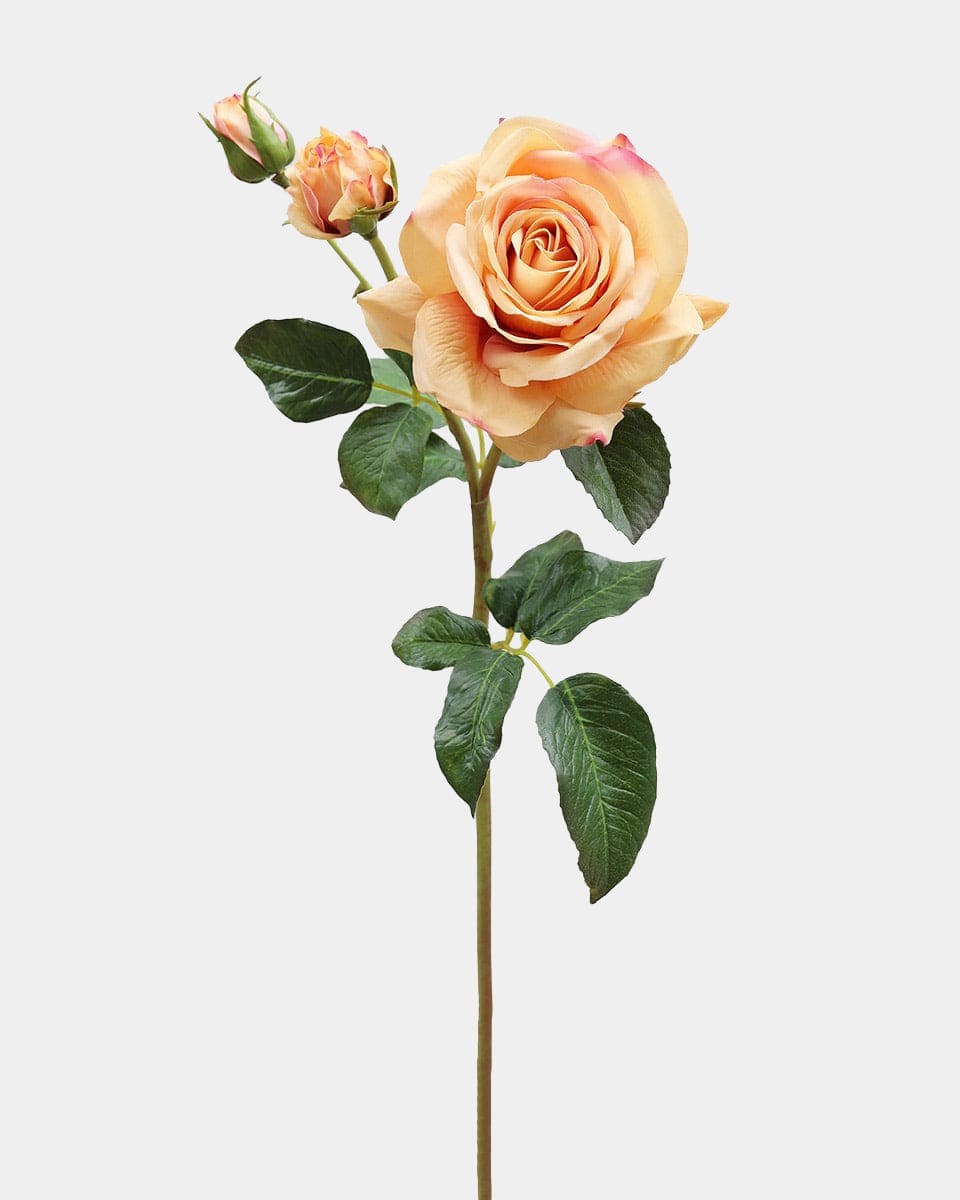

Real Touch Prestige Sunset Rose 22"
This sunset-colored rose demonstrates optimal petal layering with approximately 28-32 petals creating natural depth and realistic light play through its warm orange-to-pink gradient.
This particular rose showcases how proper petal count enables realistic color transitions. The multiple layers allow for subtle color variations within each petal, creating the natural gradation you'd find in garden varieties. Single-layer roses simply can't achieve this complexity.
The real-touch technology combined with accurate petal mathematics produces roses that respond to light exactly as their natural counterparts would.
Matching Petal Counts to Rose Varieties for Authenticity
Understanding specific variety requirements has become crucial in my consulting work. English roses typically feature 40-80 petals arranged in quartered patterns, while hybrid teas usually display 25-35 petals in high-centered formations. Getting these details right makes the difference between convincing and obviously artificial.
Garden roses present the most complex challenge with their extremely high petal counts (60-120 petals). I remember struggling with a David Austin rose reproduction until I realized the outer petals needed different sizing than the inner layers. The breakthrough came when I mapped the natural petal progression from guard petals to center.
Or should I say "coral"? Actually, I think "warm peach" better describes that particular shade—these color distinctions matter when you're trying to capture authentic variety characteristics.
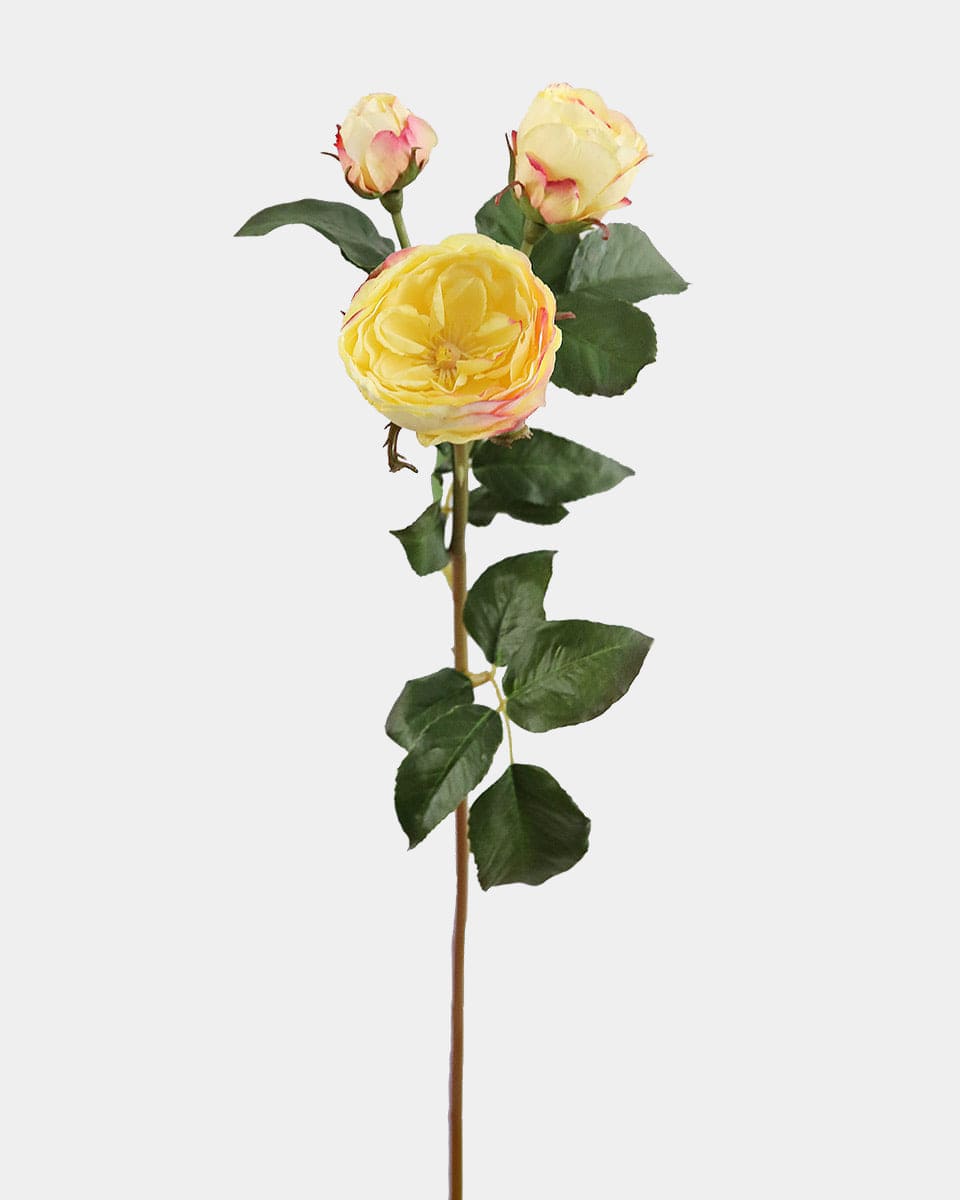

Yellow English Rose 22"
This English rose variety demonstrates the complex petal structure typical of David Austin roses, with multiple layers creating the characteristic ruffled, old-fashioned appearance.
The key insight from working with these complex varieties is that petal count alone isn't sufficient—petal arrangement matters equally. English roses require specific petal positioning to achieve their signature quartered look, while hybrid teas need precise central pointing.
Floribunda roses present another interesting case with their cluster-blooming nature. Individual blooms typically feature 15-25 petals, but the overall spray effect requires understanding how multiple roses interact visually. For a comprehensive breakdown of how different rose types express their unique characteristics, see our complete guide to artificial rose classifications and realistic design techniques.
Practical Applications in Artificial Rose Selection and Design
When selecting artificial roses for specific applications, petal count becomes a practical tool rather than just academic knowledge. High-traffic areas benefit from moderate petal counts (15-25) that maintain their shape under handling, while display pieces can accommodate the delicate beauty of high-petal varieties.
For wedding flowers, I typically recommend roses with 25-35 petals as the sweet spot between elegance and durability. These provide sufficient fullness for photographs while withstanding the inevitable handling during ceremonies. I learned this the hard way during a garden wedding where the high-petal roses looked stunning but couldn't survive the reception.
Pro Tip: For floral arrangements requiring multiple rose sizes, maintain consistent petal count ratios. If your large roses have 30 petals, smaller companion roses should have proportionally fewer (15-20) to maintain visual harmony.
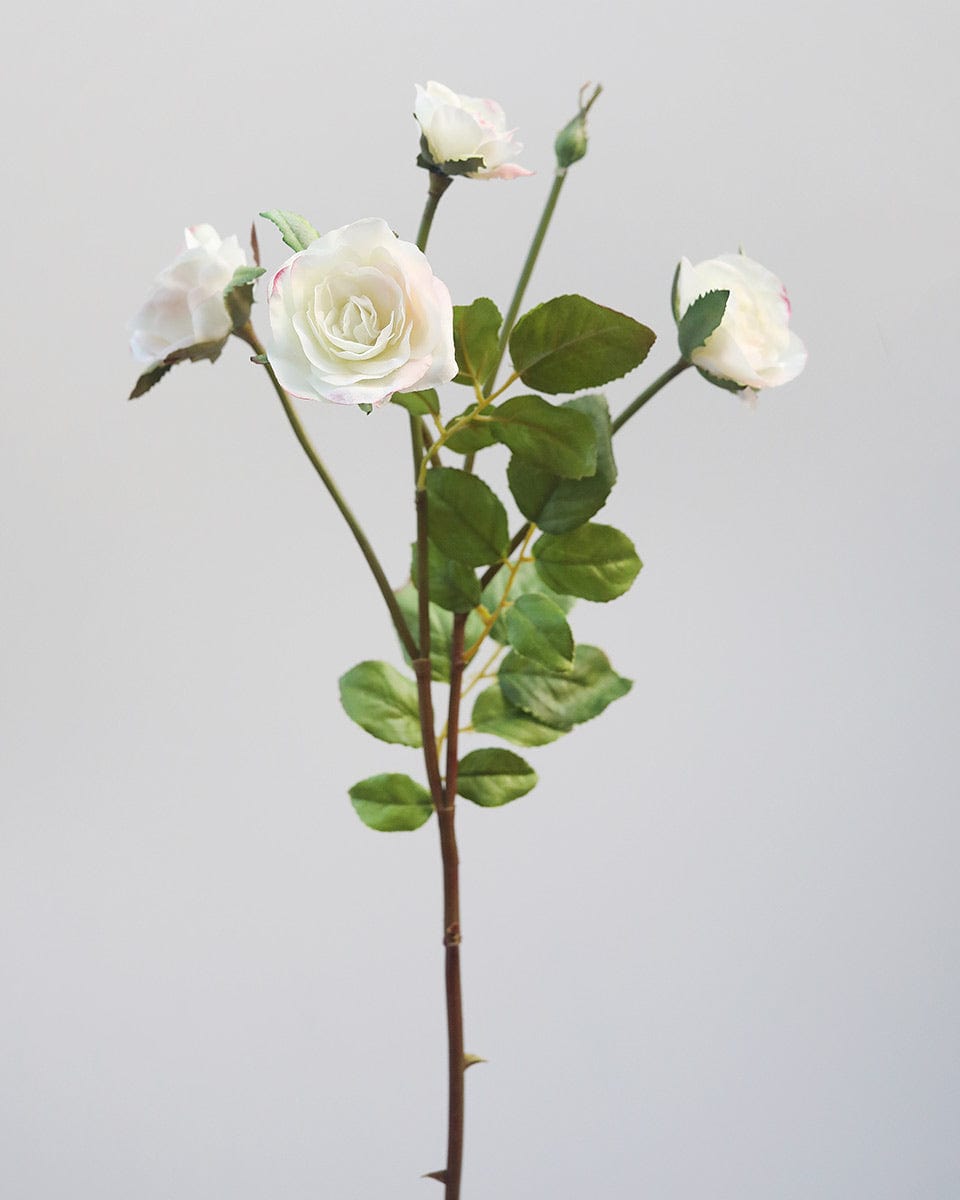

White Floribunda Rose Spray 19"
This floribunda spray showcases proper cluster rose construction with individual blooms featuring appropriate petal counts for this naturally abundant flowering type.
Spray roses like this floribunda demonstrate how petal count affects overall composition. Each individual bloom maintains the correct 15-20 petal range typical of floribunda varieties, creating authentic cluster effects. The varying bloom stages show how petal count translates across different opening phases.
Air-infused dyeing techniques work best with specific petal count ranges. Lower counts allow deeper dye penetration, while higher counts create beautiful color variations between layers.
Expert Insights on Quality and Authenticity
Through my consulting partnership with Prestige Botanicals, I've observed how petal count serves as a reliable quality indicator. Mass-produced roses often use arbitrary petal numbers that don't correspond to any natural variety, immediately signaling their artificial nature.
Premium manufacturers invest in research to match natural petal patterns precisely. This attention to botanical accuracy reflects throughout their construction quality, from petal thickness to stem flexibility. Companies focusing on accurate petal counts typically excel in other realism factors as well.
The most convincing artificial roses I've encountered use variable petal sizing within each bloom. Natural roses don't have perfectly uniform petals, and the best artificial versions replicate this organic variation. Combined with accurate petal counts, this creates remarkably authentic results.
Understanding petal mathematics also helps identify when roses have been artificially enhanced beyond natural limits. Some manufacturers add excessive petals thinking more equals better, but this actually reduces realism. Natural garden roses rarely exceed 120 petals.
Realistic roses require this balance between botanical accuracy and manufacturing practicality. Through my research and consulting work, I've learned that respecting natural limits produces far more convincing results than attempting to exceed them.
Now that you understand the critical role of petal counts in rose authenticity, browse our complete artificial rose collection featuring botanically accurate petal structures to find varieties that match your design vision perfectly.
Frequently Asked Questions
What's the ideal petal count for artificial roses in home decor?
For most home applications, I recommend roses with 20-35 petals. This range provides good visual fullness without appearing overwhelming in residential spaces. Higher counts work beautifully for formal dining areas, while lower counts suit contemporary settings perfectly.
How can I identify quality artificial roses based on petal count?
Look for roses that match natural variety patterns—garden roses with 40-80 petals, hybrid teas with 25-35, and wild roses with 5-8. Avoid roses with obviously arbitrary numbers like exactly 50 or 100 petals, as these rarely correspond to real varieties.
Do higher petal counts always mean better quality?
Not necessarily. While higher counts can create beautiful fullness, they must match the intended variety. A hybrid tea with 80 petals would look unnatural, while a garden rose with only 15 petals would appear incomplete. Quality comes from accuracy, not just quantity.
Can I modify artificial roses if the petal count seems wrong?
Yes, but it requires careful work. You can remove outer petals from overly full roses, but adding petals convincingly is much more difficult. I typically recommend selecting roses with appropriate petal counts initially rather than attempting modifications later.
🌹 The Beauty That Never Fades
Our faux roses capture the very essence of nature. Come and explore our best selling collection!
Shop Artificial Roses Now







